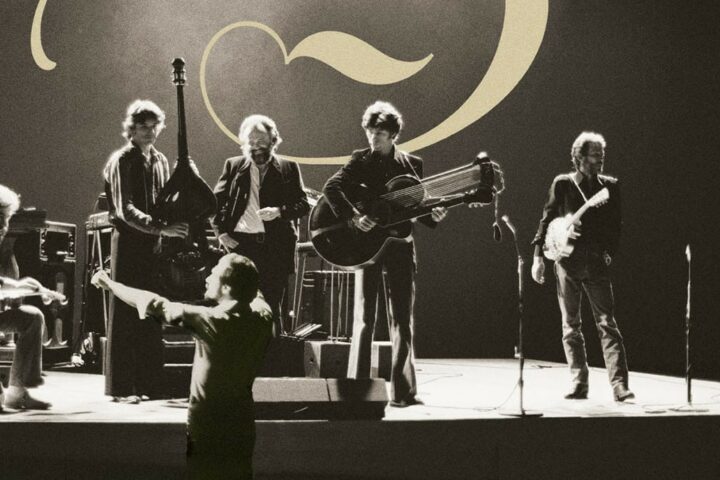Recorded over the course of a month at Neil Young’s Broken Arrow Ranch, 1990’s Ragged Glory was an exercise in spontaneous studio collaboration that showcases the creative prowess of an artist always a step ahead of his time. Young’s career is marked by a restless resistance to simple classification, and the album’s messy guitar solos, lively cohesion, and usage of feedback and distortion predated the explosion of grunge (some of the songs later found their way into live sets by bands like Pearl Jam and Bush).
Fu##in’ Up, a live reimagining of Ragged Glory, is something of a victory lap for Young and Crazy Horse, who revisit the material with even more grit and grime. Which isn’t to say that the new approach distracts from the songs, because in some ways it’s truer to the spirit of the material, as the messier mix captures the energy of a one-and-done performance. Such was the intention of Ragged Glory in the first place.
Sonically, Fu##in’ Up sounds much like one would expect a Neil Young live album to sound like in 2024. The singer’s iconic vocals have always felt a bit strained, but, at 78, he’s finally caught up with his “old man voice.” And his guitar work still pops, dripping with reverb and delay to help smooth out a playing style that famously toes the line between loose and sloppy.
Though Fu##in’ Up maintains the same track sequence as Ragged Glory, the titles have changed, each borrowing a lyric from the songs themselves. And when the album does deviate musically from its source material, it does so with subtlety and purpose. “Walkin’ in My Place (Road of Tears),” originally “Mansion on the Hill,” features a piano riff that tastefully doubles the main guitar line, while “To Follow One’s Own Dream,” originally “Days That Used to Be,” includes a new harmonica line that feels quintessentially Neil Young, serving as something of a retroactive bridge between the folksier and grungier sides of his catalog.
Written in midlife, the lyrics of these songs bear the mark of a man aware of his own mortality and anxious about his relevance. Now, in an era when Beyoncé is dropping musical references to Buffalo Springfield on Cowboy Carter, Young’s voice finds itself essential to the zeitgeist once again. “Well, I saw an old man walking in my place/When he looked at me, I thought I saw my face,” he sings on “Walkin’ in My Place.” If it was already an apt description of his place in the rock icon in the ’90s, it’s an uncanny one today.
Since 2001, we've brought you uncompromising, candid takes on the world of film, music, television, video games, theater, and more. Independently owned and operated publications like Slant have been hit hard in recent years, but we’re committed to keeping our content free and accessible—meaning no paywalls or fees.
If you like what we do, please consider subscribing to our Patreon or making a donation.


